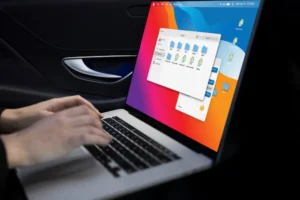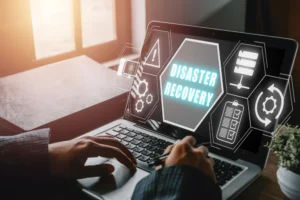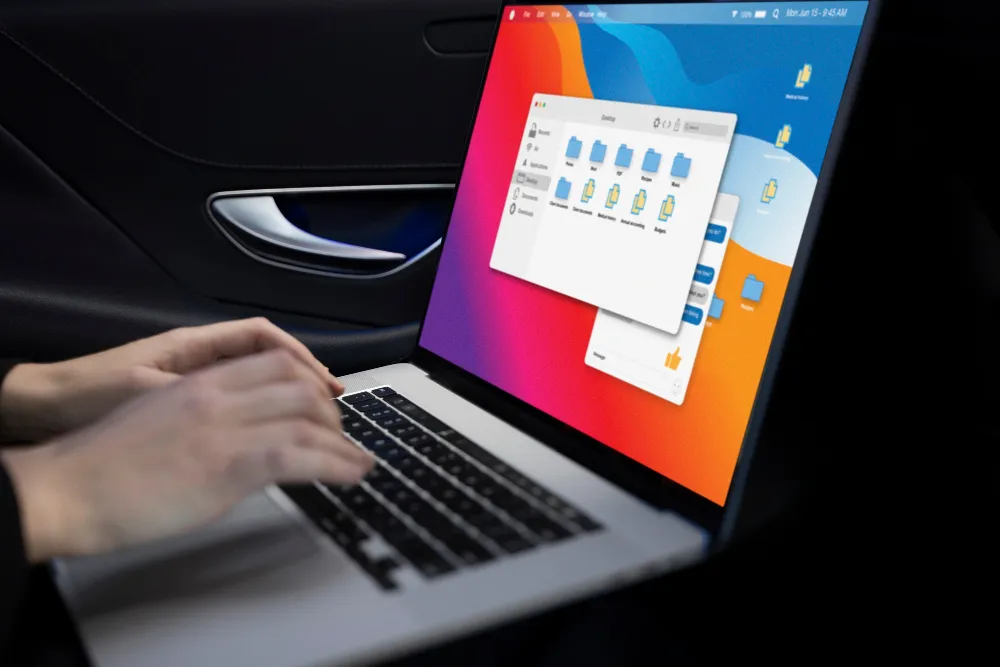Click, buzz, beep… that’s your old printer hard at work again. But behind those familiar sounds, there’s a hidden risk quietly creeping in. Every IT asset, from the laptop on your desk to the servers powering your operations, has a shelf life. And if you’re not actively managing that journey, it could cost you more than you think. Technology that’s past its prime doesn’t just slow down your workflow, it can disrupt your entire business when you least expect it.
We all want to get the most from our tech investments, but pushing devices beyond their lifespan can cost you more than just a few headaches. Keeping a close eye on your IT lifecycle helps you find the sweet spot between maximising value and avoiding costly downtime or security threats.
By managing your IT assets wisely from purchase to retirement, you keep your business running smoothly, with no surprises, just steady performance. In this guide, we’ll walk you through the key stages of the IT lifecycle and best practices to help organisations stay secure, efficient, and ready to scale.
What is the IT Lifecycle?
The IT lifecycle is the complete journey that every IT asset, like laptops, servers, software, and network equipment, goes through from the moment it’s planned and purchased to the point it’s retired or securely disposed of.
This lifecycle includes several key phases: procurement, deployment, management, upgrades, and decommissioning. Each stage is essential to getting the most out of your technology investment.
Effective IT lifecycle management (ITLM) ensures that technology is introduced into the business purposefully, managed efficiently, updated regularly, and eventually disposed of responsibly. This process is essential for maximising value, reducing operational and security risk, improving security, and ensuring regulatory compliance.
Why Does the IT Life Cycle Matter?
Technology isn’t just a cost; it’s a necessary driver of growth, productivity, and innovation. But when IT systems are mismanaged or left outdated, they can quickly become liabilities.
Here’s why managing the IT life cycle is essential:
- Improved Productivity: Up-to-date systems minimise downtime and help employees work more efficiently.
- Reduced IT Costs: Proactive planning avoids emergency replacements and maximises asset lifespan.
- Enhanced Security: Regular updates and timely decommissioning help prevent data breaches.
- Better Decision-Making: Clear visibility into asset health and performance supports smarter IT strategies.
- Scalability and Compliance: Businesses grow with fewer disruptions and stay compliant with data protection laws.
Proper IT lifecycle management turns technology from a maintenance burden into a strategic business asset.
What Are the Stages of the IT Lifecycle?
The Information Technology lifecycle consists of five key stages, each contributing to the overall efficiency, security, and value of your technology investments.

1. Procurement
The procurement phase is where the lifecycle begins. It involves evaluating business needs and deciding what technology assets should be purchased, when to purchase them, and from which vendors. This stage starts with an assessment of current and future technology requirements, aligned with business goals. From there, IT and procurement teams create a plan that includes budgeting, vendor evaluation, and solution selection.
2. Deployment
Once the right technology assets are procured, they must be properly deployed within the organisation. Deployment refers to the process of physically setting up hardware, installing necessary software, configuring systems, and integrating the new assets into the existing IT infrastructure.
This phase typically includes unboxing and assembling devices, installing operating systems and business-critical applications, applying baseline security settings, and connecting systems to the network. IT teams also conduct initial testing to ensure everything functions as expected. User training may also be provided at this stage to facilitate adoption and productivity.
When deployment is well-planned and executed, it reduces disruptions and accelerates the time it takes for new technology to deliver value. On the other hand, a poorly handled deployment can lead to misconfigured systems, security vulnerabilities, and unhappy users.
🛠 Best Practice Tip: Use automation tools like imaging software, endpoint management platforms, and deployment scripts to roll out new systems quickly and consistently.
Don’t let poor deployment ruin your tech investment. Whether you’re rolling out new laptops, servers, or business-critical apps, our team ensures a smooth setup that saves time, secures your data, and sets you up for long-term success. Contact us!
3. Management and Support
The management and support phase is the longest and often the most demanding part of the IT lifecycle. This stage focuses on maintaining, monitoring, and supporting IT assets to ensure they remain operational, secure, and efficient over time.
Key responsibilities during this phase include tracking system health, applying software updates and security patches, managing user accounts and permissions, and offering helpdesk support for troubleshooting. It also involves backing up data regularly, managing licenses, and monitoring the status of warranties. IT teams keep detailed records of all assets, which helps with accountability, audits, and strategic planning.
Effective IT management ensures business continuity and consistent performance. Without proper management, IT environments become unstable, vulnerable to attacks, and expensive to maintain.
4. Upgrade and Refresh
As time goes on, technology needs change, and existing systems may no longer meet performance or compatibility requirements. The upgrade and refresh phase involves enhancing or modernising IT assets to extend their life and maintain productivity without completely replacing them.
Upgrades might include expanding storage or memory in computers and servers, replacing old software with newer versions, or migrating services to the cloud. In some cases, businesses may choose to enhance certain components of a system rather than replace the entire setup, especially when budgets are tight.
Refreshing systems helps maintain strong performance and security standards while delaying the costs of full asset replacement. It also smooths transitions to newer platforms, allowing organisations to adopt modern technologies more gradually and affordably.
5. Decommission and Disposition
Eventually, every IT asset reaches the end of its useful life. The decommission and disposition stage ensures that outdated technology is safely removed from the environment and disposed of in a secure, compliant, and environmentally friendly way.
This stage involves backing up important data from the retiring systems and securely wiping all sensitive information to prevent data breaches. Licenses must be deregistered, and accounts or services associated with the asset must be deactivated. The process is thoroughly documented for security compliance and auditing purposes. Finally, old equipment is either recycled through certified e-waste vendors or responsibly donated.
Improper decommissioning can result in data leaks, legal issues, and environmental harm. A structured and secure decommissioning process closes the IT lifecycle responsibly and prepares the business for the next round of procurement.
The IT Lifecycle Management Process
Information Technology Lifecycle Management (ITLM) is the process of strategically planning, deploying, maintaining, upgrading, and retiring IT assets, such as hardware, software, and systems, throughout their entire lifespan. It’s about making sure your technology delivers the most value, stays secure, and supports your business at every stage.
A robust ITLM approach includes:
- Asset inventory systems to track hardware, software, and licensing
- Security practices are embedded at each phase
- Automated tools to manage patching, monitoring, and asset health
- Cross-team collaboration between IT, finance, operations, and procurement
- Scheduled refresh cycles to keep performance high and reduce surprises
- Audit readiness for compliance with standards like ISO 27001 or GDPR
Ready to turn your IT operations from a cost centre into a competitive advantage? Let’s build an IT lifecycle strategy that supports growth, maximises ROI, and keeps your infrastructure secure and efficient. Contact us now for a personalised IT lifecycle assessment.
What Does Effective IT Lifecycle Management Involve?
1. Planning and Strategy: Aligning IT purchases and upgrades with business goals to ensure every investment delivers value.
2. Asset Tracking: Using IT Asset Management (ITAM) systems to maintain up-to-date records of hardware, software, and licenses.
3. Automation: Streamlining routine tasks like patch management and inventory updates to reduce errors and free up IT resources.
4. Collaboration: Coordinating across procurement, IT operations, security, and finance teams to ensure all lifecycle stages are connected.
5. Security Focus: Embedding security measures throughout the lifecycle, from initial setup to secure disposal.
6. Continuous Review: Regularly auditing IT assets and processes to identify improvement opportunities and plan future upgrades.
7. Training and Support: Ensuring IT teams and users are informed and supported through changes.
By following these principles, businesses transform IT from a reactive cost centre into a strategic driver of growth and innovation.
Benefits of IT Lifecycle Management
Efficient IT life cycle management delivers numerous benefits:
→ Improved Productivity
When your hardware and software are well-managed throughout their lifecycle, from acquisition to retirement — you minimise unexpected failures and downtime. Staff spend less time waiting on repairs or fixes and more time doing their actual work, keeping operations running smoothly.
→ Cost Control
Lifecycle management allows you to plan for upgrades, replacements, and maintenance before things break. This proactive approach avoids costly emergency repairs and reduces unexpected expenses, while also helping you get the most value out of your IT assets over their entire lifespan.
→ Enhanced Security
By managing technology through its lifecycle, you ensure devices and systems stay updated with the latest security patches, and you can securely dispose of old equipment. This reduces vulnerabilities, prevents data breaches, and keeps sensitive information safe.
→ Scalability
When you proactively manage your IT resources, you’re better prepared to scale up or down as business needs change. With proper planning, you can add new devices, applications, or users without overwhelming your existing infrastructure or creating IT bottlenecks.
→ Informed Decision-Making
Lifecycle management provides clear records of what IT assets you have, how they are performing, and when they’ll need to be replaced. This visibility makes it easier to plan budgets, forecast future needs, and align technology strategy with your business goals.
Conclusion
Managing your IT assets isn’t just about keeping track of devices, it’s about making strategic decisions that impact your entire business. When done right, IT Lifecycle Management (ITLM) helps you avoid unexpected costs, reduce downtime, tighten security, and plan confidently for the future.
Whether you’re scaling up, refreshing ageing systems, or rethinking your technology strategy, effective ITLM ensures that your investments deliver real, measurable value.
Need help streamlining your IT lifecycle? Get in touch with our experts to assess your current setup and build a lifecycle management strategy tailored to your business needs. Contact us today and take the first step toward smarter, more secure IT operations.










